In Photos: Rare Conjoined Bats
Conjoined twins
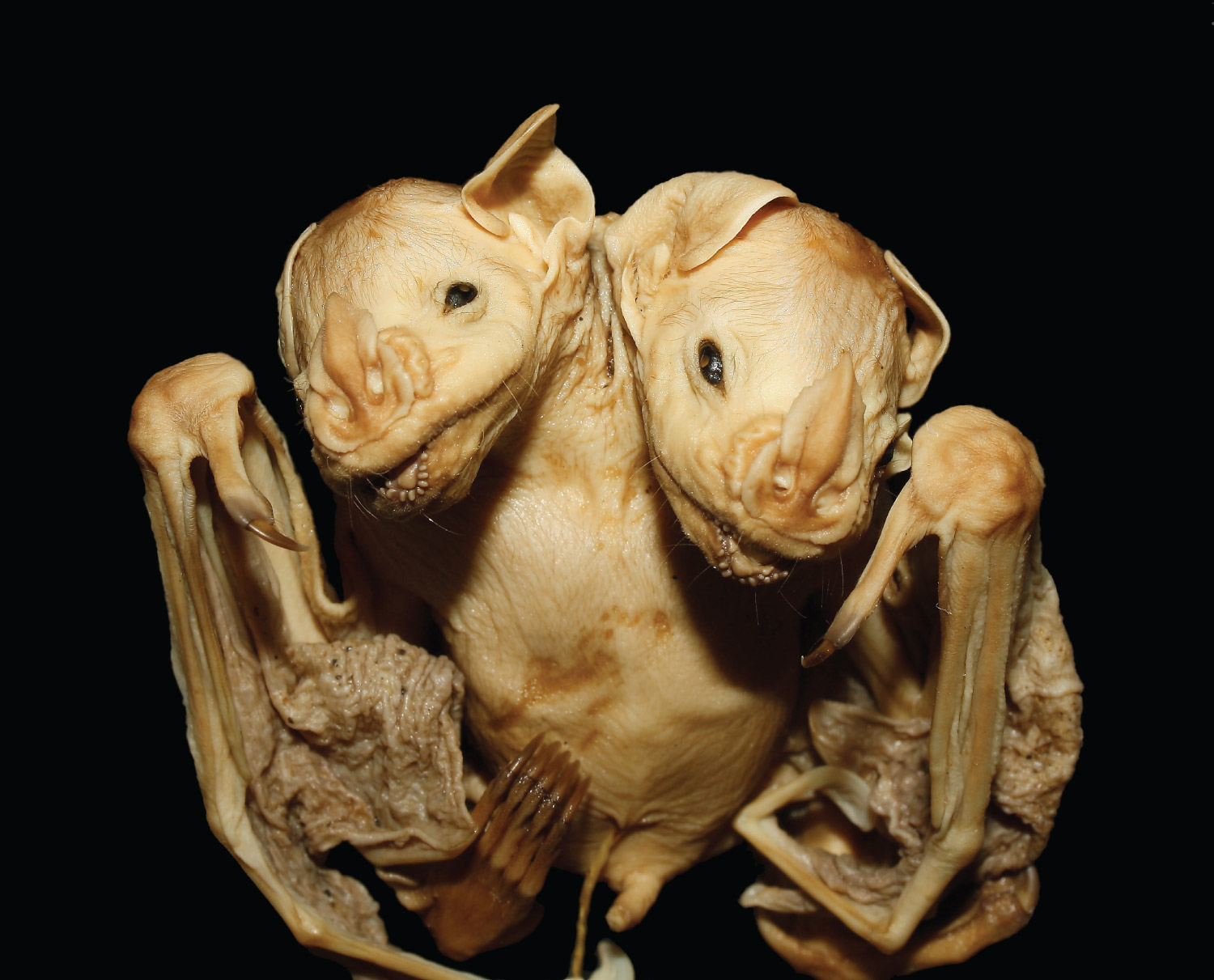
These conjoined bat twins were discovered under a mango tree by a boy in 2001 in southeastern Brazil and recently studied by a research team seeking to learn more about this unusual phenomenon. This is only the third pair of conjoined bat twins to be recorded in the scientific literature. [Read more about the conjoined bats found in Brazil]
Close knit
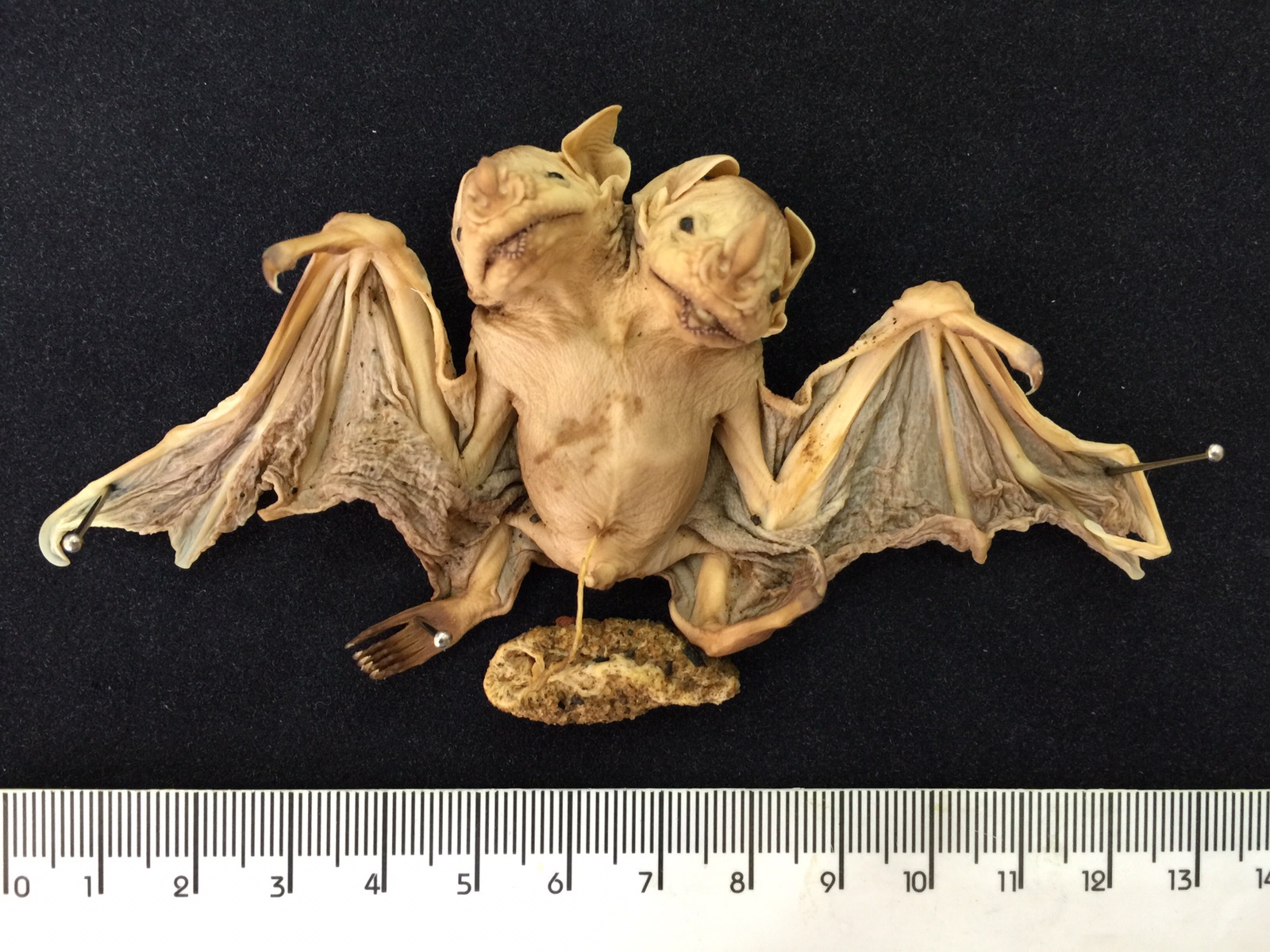
Because the researchers weren't actually present when the bat was discovered, they can't say for certain whether the bats were stillborn or still living when born. As seen in this photo, the placenta and umbilical cord are still attached.
United trunks
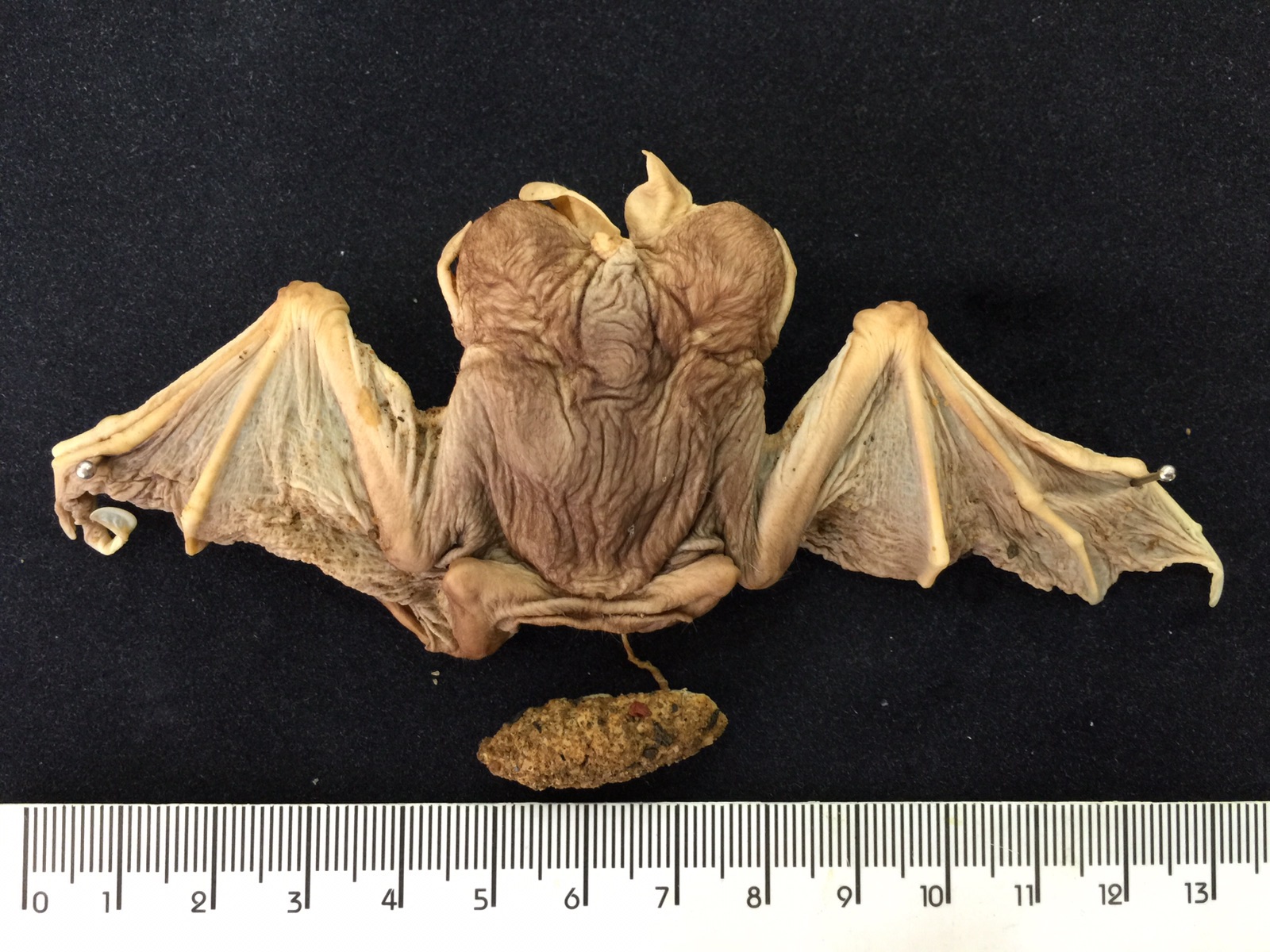
Although there are still many unanswered questions about these conjoined twins, it is believed that the phenomenon of conjoined twinning occurs when a fertilized egg splits later after fertilization than the fertilized egg that develops into separate identical twins splits. The original cause of this mistiming, however, remains a mystery.
Head-on
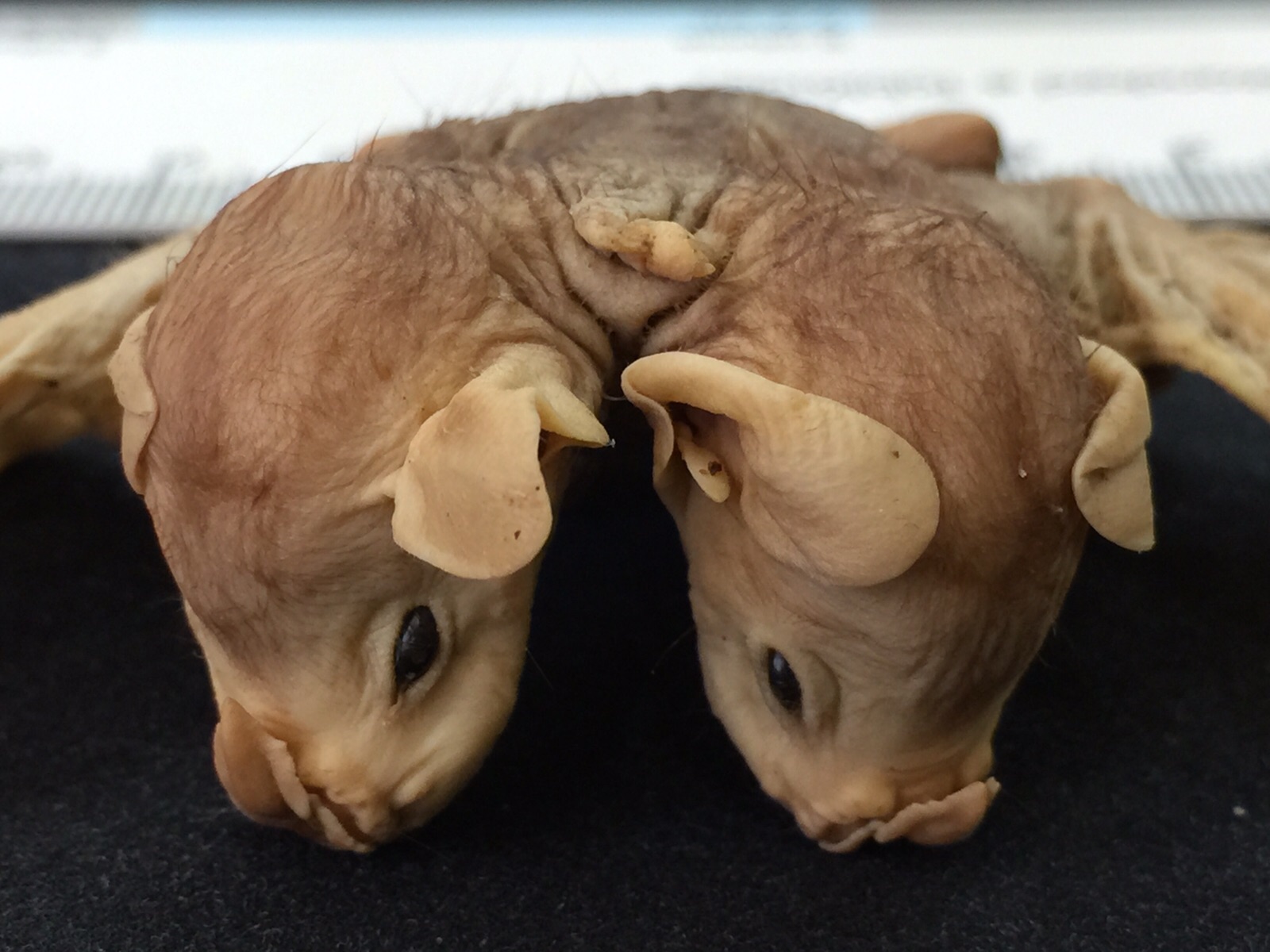
Extra tissue can be seen here between the twins' heads, ending in what the scientists call a "thumb-like structure." Both twins appear equal in size.
United spines
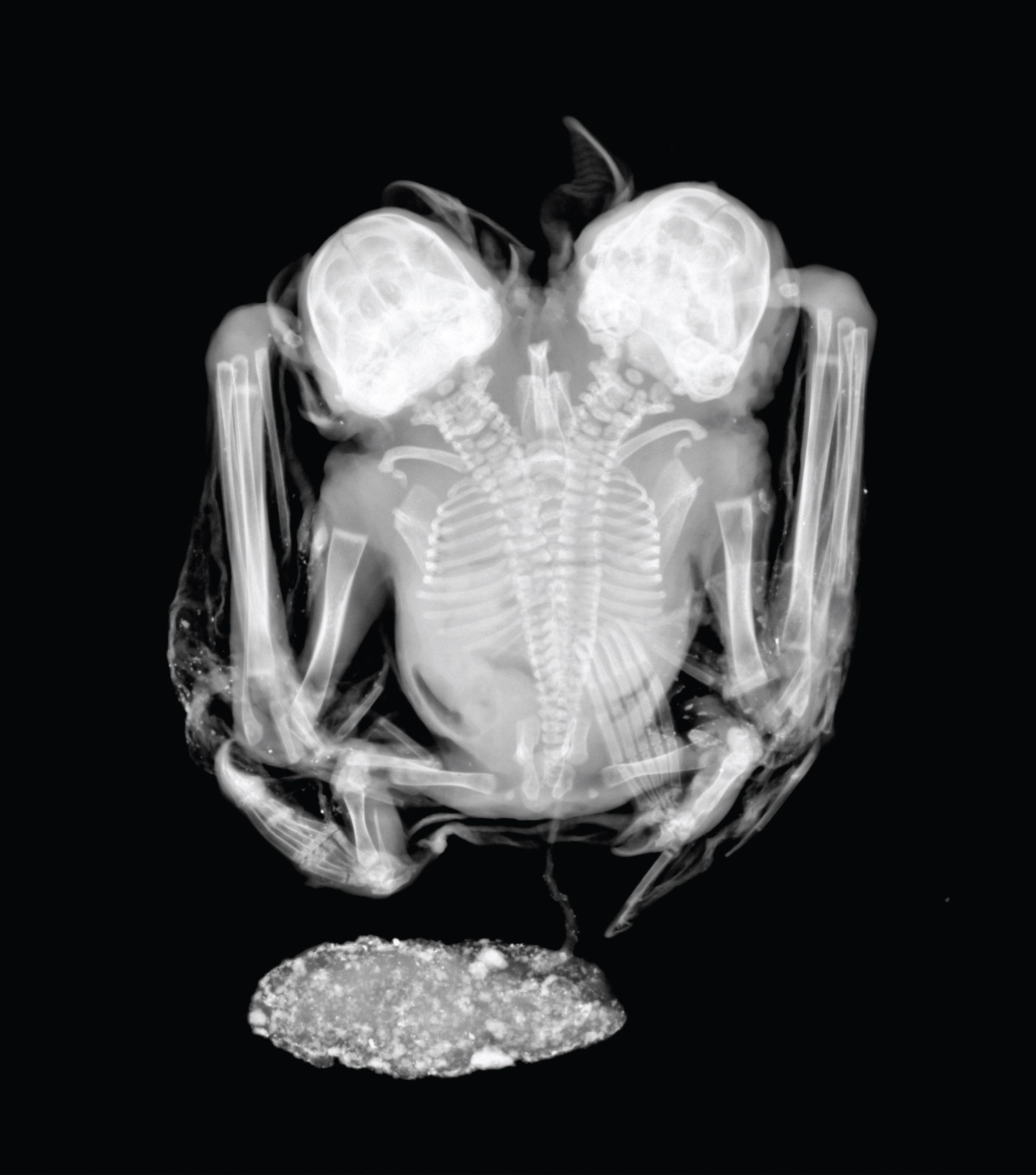
In this X-ray of the twins, the base of their shared spine can be seen branching into two. The researchers chose only to examine the twins using X-rays and an ultrasound so that the specimens could be kept intact.
Get the world’s most fascinating discoveries delivered straight to your inbox.



